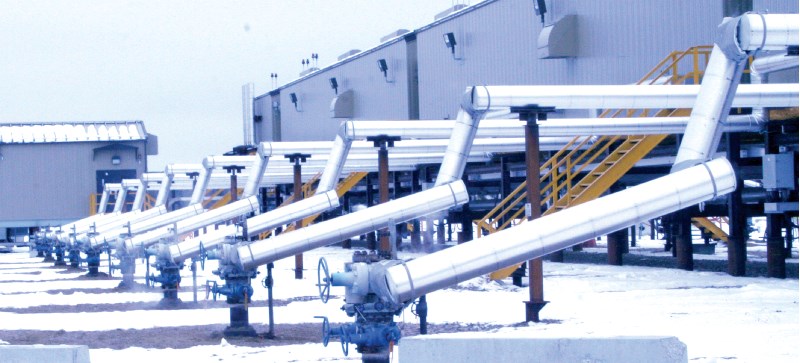Bitumen production from Alberta's oilsands jumped 14 per cent in 2009, and now accounts for over 76 per cent of all oil produced in this province.
Those numbers are highlighted in the 2009 annual report of the Energy Resources Conservation Board, which was released Friday.
The report predicts a bright future for production from the oilsands region. The ERCB predicts production from the oilsands will increase almost 115 per cent in the next 10 years, from 1.49 million barrels per day in 2009 to about 3.2 million barrels per day in 2019.
While oilsands production jumped 14 per cent last year, conventional oil production was down 8.6 per cent, according to the ERCB.
The government's energy production regulator is predicting oil will average $78 US per barrel in 2010, and climb to an average of $122 US per barrel in 2019, though the price will continue to be volatile and subject to significant swings.
The crash in the oil market in late 2008 and early 2009 after record prices in summer of 2008 reduced the number of new wells drilled and brought into production in 2009, the report notes.
The ERCB licensed just under 7,000 new wells in 2009, for everything from conventional oil and naturals gas to bitumen production in the steam assisted projects that dominate the Bonnyville-Cold Lake region.
Wells drilled for bitumen production purposes totalled 2,211. That was down sharply — about 52.3 per cent — from the record of 4,637 in 2008. In fact, 2009 was the slowest year for new bitumen wells in the past eight years, according the ERCB's figures.
The three-year period prior to 2009 saw an explosion of drilling for bitumen — 12,274 wells in total.
In situ bitumen production based on cyclic steam stimulation and steam assisted gravity drainage jumped about 13.8 per cent in 2009, not quite keeping up with the growth in production from mining operations for bitumen in the Fort McMurray region. Still, the ERCB is predicting production from in situ sources in this region and much of the rest of the province's north will surpass production from mining operations by 2015.
“With an improved price environment and more receptive capita markets, many of these deferred projects are now moving forward and new (in situ) projects are being announced and moving through the regulatory approval process,” the report says. “Based on this projection. In situ bitumen production will exceed mined bitumen production by 2015 and will account for 53 per cent of the total bitumen production by 2019.”
The method of choice for growing oilsands production is steam assisted gravity drainage.
“SAGD production increased by 39 per cent in 2009 relative to 2008,” notes the report. “Primary production has been growing since 2003 and increased by 11 per cent from 2008 to 2009.”
SAGD is the method of choice for most of this area's newer development, though CSS technology is the preferred method of extraction for Imperial Oil's Cold Lake operations and for Canadian Natural Resources at Primrose Lake.



